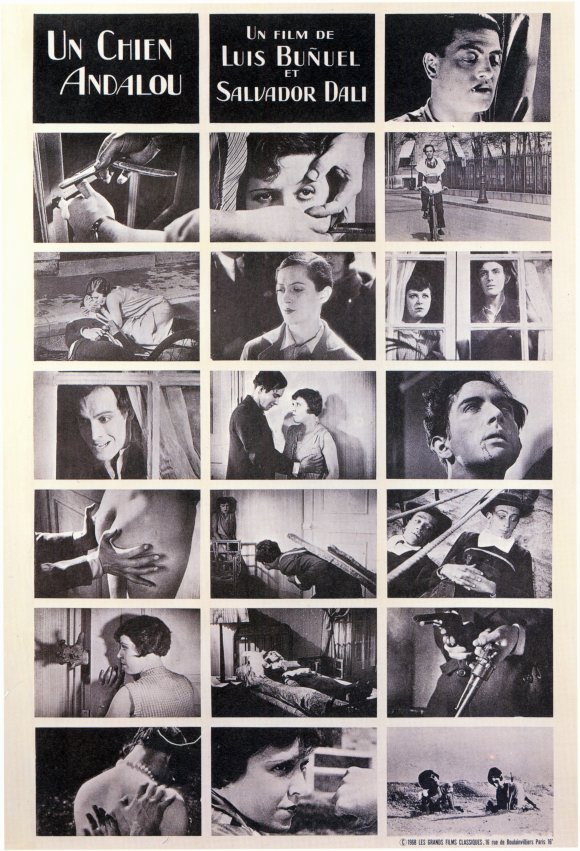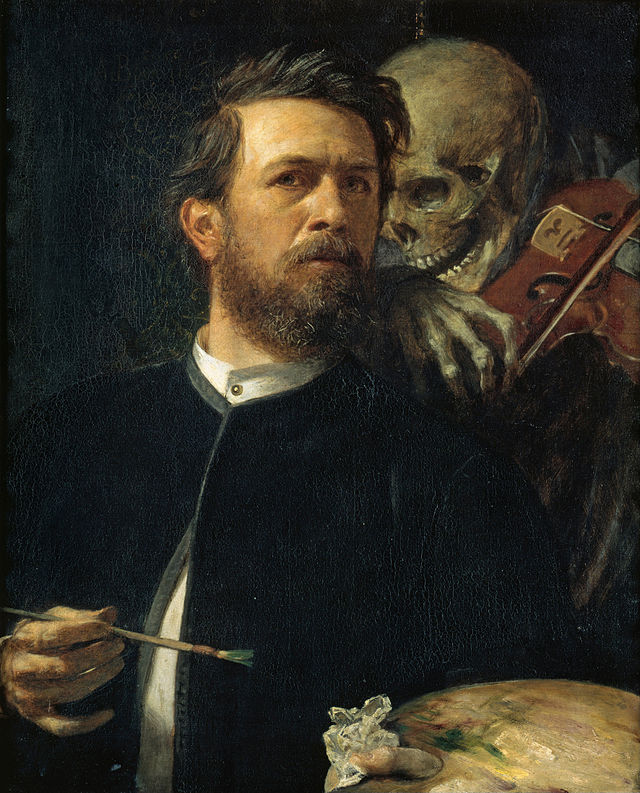“Thou shalt not let thy cattle gender with diverse kind; thou shalt not sow thy field with mingled seed; neither shall a garment mingled of linen and woolen come upon thee.”
LEV 19:19
There are three laws Yahweh gave Moses, rejecting unions and mixes practiced by pagan peoples and held by the Jews as aberrations. The first forbids creation of monstrous animals; the second is metaphorically taken to be the banishment of bisexuals. They carry a notion of impurity pointing to the spiritual confusion of the gentiles. Christianity, in turn, interpreted them as laws against wickedness.
These ancient prohibitions are engraved in some of our subconscious, and are the reasons for some of our atavistic fears expressed in “antinatural” visions of monsters and prodigies. These, at the same time, are images of temptation, like the hermaphrodite, the sphinx, the ram with a man’s torso, the foetus begot by Frankenstein, today’s eugenic beings and clones, creatures of undefined sex, marked beings.
Capricorn it is merely a zodiac sign that combines in its dual image the pull to the mountain (the goat) and the abyss (the fish). But read between the lines of our atavistic fear which the ancient prohibition fosters in us, this sign could also be a mating of two beast of different species, separated by a line: the ram and the fish, in other words… Satan and Christ.
The Shaman’s Collection defies bisexuality or hemaphrodytism by attaining an open, almost graceful, almost levitating, almost superhuman asexuality, albeit carnally disquieting and vile. In sealing the male/female partition, the shaman transcends the duality that preys on common man, and sheds it as he would a corpse’s shroud.
Medusa, on the other hand, shows the frightening evil version of the androgyne as a bald (masculine) and shaved (obscene) black-mass priestess sporting a fancy shawl at her bosom as if in contempt of the pious mantilla. A sliding drop of semen stains the picture, reminding us –more to our terror, we are not quite sure in what way– of that Levitical prohibition: “Thou shalt not wear a garment mingled of linen and woolen”. We find ourselves facing the old supernatural horror that undoubtedly divides us into two: attraction and repulsion which makes us different from ourselves.
The bipartition of the picture we mentioned in the dividing line of Capricorn is also the axis of The Reverend Charles Lutwidge Dogson’s Fantasies, in which Arturo Rivera alludes to Alice in Wonderland author Lewis Carroll’s passion for photographing little girls. The child figure, now spurious and morbid, discovers her nakedness. She wrenches away the ample piece of clean cloth to reveal on her skin the line of an excrescence. Here, I should like to mention a “magic” experience that appears over and over in Arturo Rivera’s painting: significant coincidence. I asked the painter whether the bat drawn in the upper part of this painting referred to Lewis Carroll’s photographic studio, where, among an ample collection of toys and dolls for little girl’s comfort, was a wing-flapping, flying bat the writer himself had made. No, said Arturo Rivera; he knew nothing about that bat. I record this as one of many coincidences that abound in this artist and his work. I have noticed a whole string of them, one after the other. They apparently are not motives at the same time necessary, and they bring me to a very enigmatic aspect of his painting: nature and the distribution of objects in his pictures.
Updating a myth rather than portraying symbols, the appearance of a wide range of figures like geometric bodies, plants, dissected animals, organs, etc. could hardly be considered a sign of a purely compositive or simply polysemic reasoning or ratio: These figure are synchronized. As in the bones that a soothsayer throws on the ground, or a flight of birds at the moment a question is asked, or the interpretation of a sacrificed animal’s entrails, or the three coins disbursed with a consultation of I Ching, the essence is in the coincidence, not in cause. Reading and interpreting Arturo Rivera’s pictures cannot, then, be based on artist’s intentions so much as on the speculation the paintings inspire. As if before an oracle, one is looking at a conveyance of truth rather than a strict revelation of truth.
Three pictures bear me out on this: The Island of the Dead, an extraordinary conveyance of what Arturo Rivera saw in Arnold Böcklin‘s homonymous work, a vision. In North, bipartition again mates animals of different species, not to produce a monster but to depict a re-orientation, expressed here by the archetypical change of skin, and the image of mature man overcoming death and ascending to a higher plane of existence. Legatee, conveys androgyny offering milk from the breast. Arturo Rivera’s paintings revive one of art’s ancient functions: making the viewer experience something that surpasses him in space and time, keeping the myth alive.
Text by Jaime Moreno Villareal

Fall, 1997
Gesso colors on canvas
 The Island of the Dead (Homage to Böcklin), 1997
The Island of the Dead (Homage to Böcklin), 1997
Oil on paper/linen
 North, 1997
North, 1997
Oil on wood
 Legatee, 1996
Legatee, 1996
Water-colored pencil and water color on paper
 Capricorn, 1996
Capricorn, 1996
Sanguine on paper
 Saturn, 1997
Saturn, 1997
Water color and oil on linen
 The Empty Room, 1997
The Empty Room, 1997
Gesso colors on paper
 July 17, 1975, 1 p.m. : On the Docks of New York, 1996
July 17, 1975, 1 p.m. : On the Docks of New York, 1996
Cold encaustic on canvas
 Medusa, 1996
Medusa, 1996
Oil on canvas/ wood
 The Temptations of Saint Anthony, 1997
The Temptations of Saint Anthony, 1997
Egg tempera and oil with metal inlay on paper/wood
 Epilogue, 1997
Epilogue, 1997
Gesso colors and oil on canvas
 The Shaman’s Collection, 1997
The Shaman’s Collection, 1997
Oil on wood
 Reverend Charles Lutwidge Dogson’s Fantasies, 1997
Reverend Charles Lutwidge Dogson’s Fantasies, 1997
Oil on canvas
Arturo Rivera (Mexico City, 1945). Assiduous visitor as a child to the Chopo Natural History Museum, from an early age he coupled his taste for drawing with a passion for dissecting animals and studying bones. He studied painting at the Mexican National School of Plastic Arts, the San Carlos Academy (1963-68), and serigraphy and photoserigraphy at the City Lit Art School of London (1973-74).
Rivera traveled through South America and the Galapagos Islands. He lived four years in New York (1976-79), where he exhibited in the Francis Gallery and the Jack Gallery in Soho, as well as in the Walton Gallery in Chicago. In 1979 he met the Surrealist painter Max Zimmermann who invited him to be his assistant for the courses he was giving in the Kunstakademie of Munich. There he increased his knowledge on traditional painting techniques and how to handle them. During his stay in this city (1980-81), he exhibited in the Haus der Kunst. Rivera returned to Mexico in 1981 at the invitation of Fernando Gamboa to exhibit in the Museum of Modern Art (1982). Since then he has had a number of one-man exhibitions in Mexico and cities abroad.
 Femme à tête de roses (Woman With a Head of Roses), Salvador Dalí, 1935
Femme à tête de roses (Woman With a Head of Roses), Salvador Dalí, 1935 Package and bottle’s design of Daliflor (2000). Salvador Dali has 50 perfumes in his fragrance base. The earliest edition was created in 1985 and the newest is from 2014.
Package and bottle’s design of Daliflor (2000). Salvador Dali has 50 perfumes in his fragrance base. The earliest edition was created in 1985 and the newest is from 2014. 













































